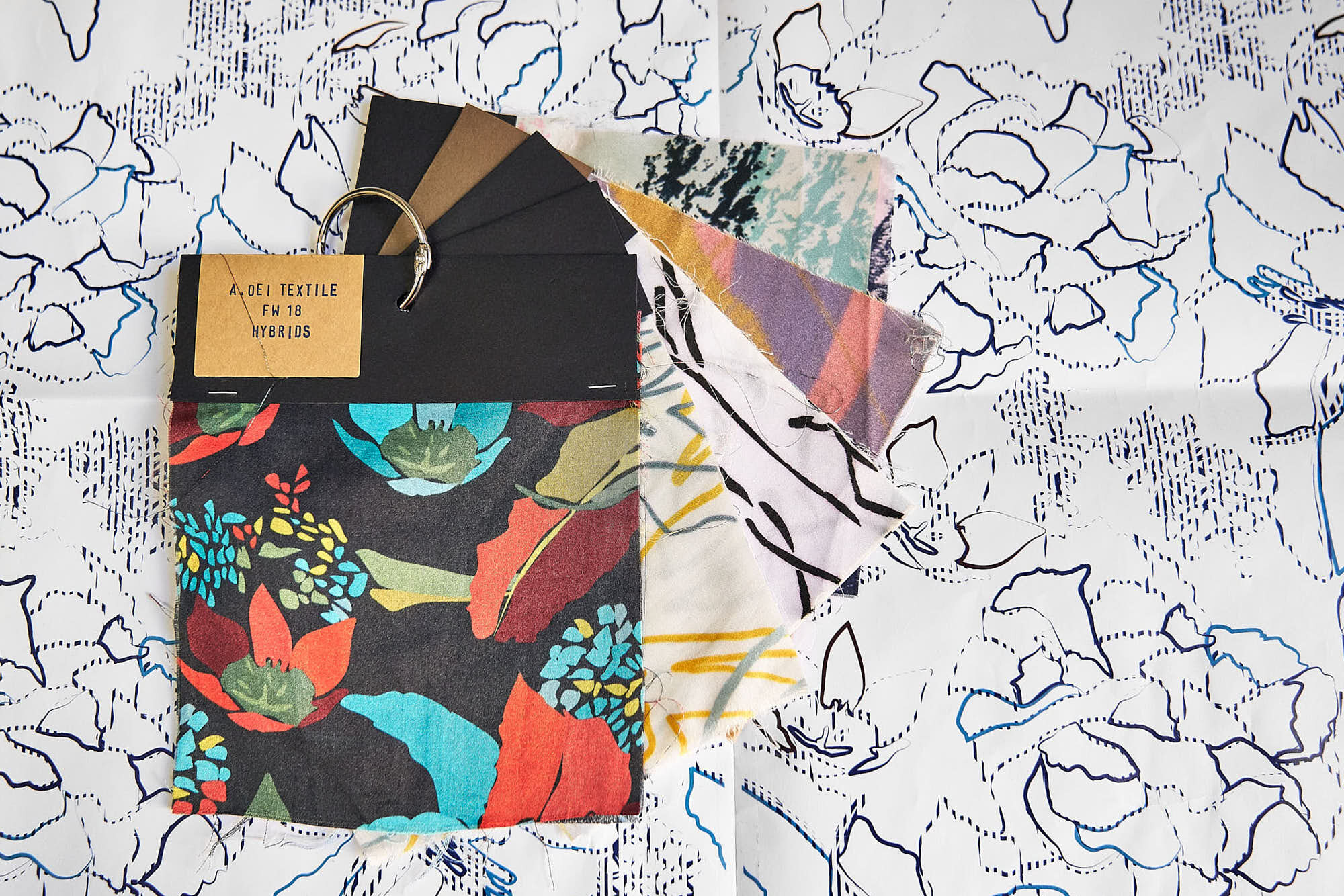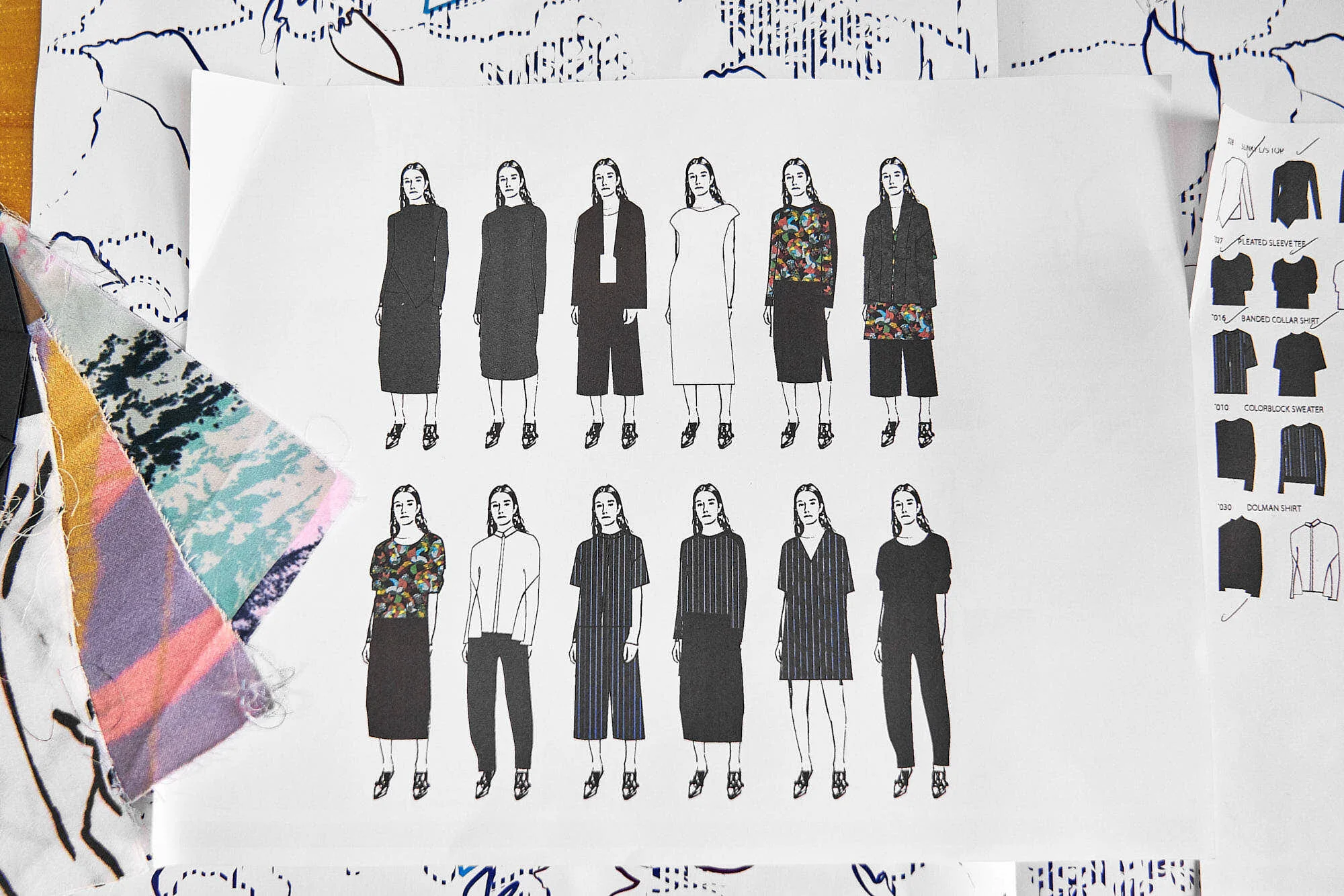The Designer Series: Angeline Oei (Part 2)
5 min read | The Designer Series | A.M.
In Part 2 of The Designer Series with Angeline Oei, we conclude with a look at her process as well as Angeline’s reflections on the benefits and pitfalls of the small-batch business model. Her fashion label A.Oei Studio is a contemporary womenswear brand currently focusing on small batch fashion production in downtown Seattle.
“Patterns are great because they streamline fabric selection. . . . And that’s one great way that I can try to be a little more sustainable, both for my business and for the environment.”
The traditional fashion manufacturing process involves dozens of steps, hundreds of people, and countless iterations. Collections can take up to 6-8 months to create and historically require either a wholesaling agreement with stockists, brick-and-mortar locations leased by your own company, or a combination of both. Companies like Amazon and Zara have led in the fast-fashion revolution with their own versions of this, with Zara splitting their focus between physical retail locations and fulfillment centers, while Amazon have focused exclusively on the latter. And certainly much more could be said.
Partly as a reaction to the industry-wide global consolidations of the early 2000’s, as well as the severe effects of fast-fashion on both planet and people, many veteran industry professionals sought to change how the game was played, if not the game itself. This led to an almost organic emergence of smaller brands around the world focusing on small-batch production within their local communities. The benefits are readily apparent—less overhead, ease of access to consumers, more agility in both product and business model, as well as more flexibility to produce smaller collections as the need arises without the pressures typically associated with long-term lease agreements and 180-day ROI cycles. The downsides are also apparent—fewer products and inventory overall lead to less revenue for your company, higher prices for the consumer, and greater uncertainty with each new collection.
As we discovered in our previous article, Angeline has a formal background and track record in the fashion industry. And after making the decision to found her own small-batch fashion label, wrestles with the tensions inherent with the new business model.
“I’m experimenting with made-to-order and direct-to-consumer. I can still make samples, but then I can wait to go into production until I know someone wants to buy it. I don’t know how sustainable that will be when it comes to large orders, but for something unique, I can make one or two and that’s it. So I’m really in-between, where I like the large-batch production system, while trying to stay in a small-batch production format.”
“When I design things, I always do so in terms of creating an entire look. For example, if it’s winter, obviously you will need a jacket. So I approach accessories by their usefulness, and prefer things that cover the whole body like outerwear. My windbreaker, for example, is made from a Japanese cotton blend that’s very water resistant and has a very nice texture, so it’s an excellent choice for both form and function.”
“Usually I start with a concept and then develop a moodboard. I think about keywords for color, texture, and silhouette. I usually start with a print, which must be really strong because it represents the entire concept and its visual elements. And then I start sourcing from my suppliers to see how it might look on different fabrics. I’ve been testing different materials and have three fabrics I always come back to every season. And patterns are great because they streamline fabric selection so that I don’t have to order a ton of samples to see how it looks in different colors. And that’s one great way that I can try to be a little more sustainable, both for my business and for the environment.”
“After I get the pattern back, I’ll do some sketching, and even draping. I’ll sketch thirty designs and choose maybe ten to sample. I try really hard to be very precise and plan things out very carefully. Everything has to make sense within the collection itself. And because I design looks and not pieces, a jacket or even a shirt has to make sense with the rest of the collection. Does it make sense on a runway and on a clothing rack? So for me, this curating and editing is such a huge part of my creative process.”
“I do the prototyping myself in the studio. And that’s the most important part for me—the pattern making and the sewing. Sometimes I’ll be halfway through sewing and realize that a different approach will work better, and it’s something you wouldn’t know if you hadn’t done the work yourself. So the actual hands-on is a really important step of my process.”
“I’ve really enjoyed using Tencel these days, which is like a silk, but it’s a wood-based cellulose fiber that uses less water than cotton, consumes less energy in its production, and is biodegradable. But even Tencel uses chemical processing, so it’s hard to tell if the suppliers have done a good job producing materials when there’s a lack of transparency. And it’s one of the reasons it’s so important to go through textile factories myself, and not through third-party suppliers. That way I can hear directly from them how a fiber is sourced and produced.”
“I also like using polyester in my work because it’s super durable. But it’s really hard to find a good recycled fabric that can maintain the same look and strength as virgin fiber. I’m still searching for a replacement, but haven’t found one that’s satisfactory.”
“For my current collection, I was very interested in the Japanese art of Ikebana. It was really more about the philosophy, the combination of something that’s fleeting and impermanent. So it’s a real contrast between death and life. In Ikebana, you might com- bine a plant that’s wilting with one that’s newborn. I wanted to incorporate that into the print, and make it more like a texture rather than an image. So I took photos of a lot of arrangements and enlarged them to a really huge size creating something very abstract. And I added green lines to it, making it very noisy and raw. And since Ikebana is very strict in its representation of curved lines versus linear shapes, I really tried to incorporate those types of curves into my final design, with the silhouettes being really streamlined, really strict, and very linear.”
“I also think balance is essentially what Ikebana is about. Balance between something that’s really delicate and something that’s really hard. It’s about finding that very precise element between two very contrasting elements. And that’s something I carry over into everything I do. Finding the romance in something and then juxtaposing that with something that’s very hard, linear, and strict.”








